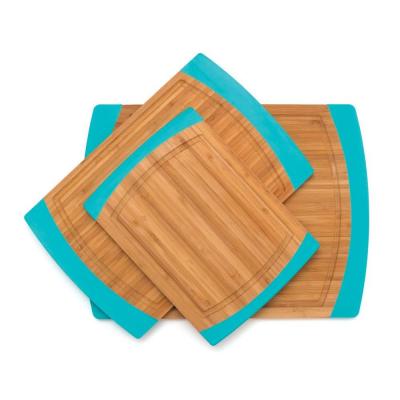
Bamboo Cutting Board Care: The Natural Way
Guest Post by Chris Long*
Bamboo Cutting Boards
Whether you need to chop vegetables, dice onions or slice bread, a cutting board made out of bamboo is not only functional, it’s pretty to look at and currently popular in kitchen décor. There are options with colorful, non-slip silicon edges like the ones pictured above by Lipper International, available in bright blue, red and yellow! Keep your bamboo cutting board care natural.
Since bamboo is part of the reed family, it is fast-growing and quickly renewable. At the same time, it is actually considered “harder” than wood and that is why it makes such an excellent construction material like these Sealant Finishing Tools here which used for everything from floors to cabinets to countertops and everything on top of those counters.
With bamboo cutting boards, regular oiling is required to keep them in tip-top shape (much like their wood counterparts) and to prevent them from splintering. They are only somewhat porous (unlike their woody cousins that will soak up anything they can) but they should never be fully submerged in water, so keep them out of the sink and the dishwasher.
For general care and cleaning, follow these steps:
• Prior to use, oil your bamboo boards with mineral oil. Apply the oil to a cotton cloth and thoroughly rub into your board. Allow to sit for 20 minutes before wiping off excess oil.
• Thereafter, condition the boards with oil once per month for light usage and up to once per week for boards that are used more frequently.
• After each use, wash your boards with a mild dish detergent and warm water. Wipe dry immediately and allow to air-dry fully in an upright position (avoid laying the board with one side facing down to dry).
• After working with raw meat, sanitize the boards with an eco-friendly solution of vinegar and water (1:5 ratio) scrub-down followed by a thorough rinse and dry.
Finally, after extensive use bamboo tends to become less resistant to bacteria so once you notice the surface beginning to take on a “furry” appearance and feel, it’s time to send your boards on to their next life.
*This post was provided by a Home Depot employee, but was edited and vetted by Eco-Chick editorial staff, and we approve of the product or products mentioned above.






